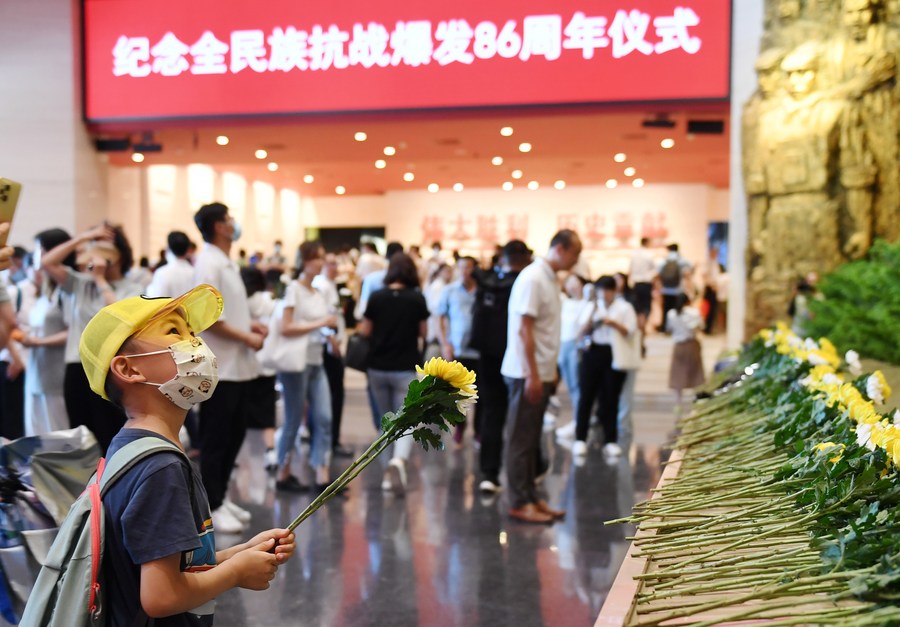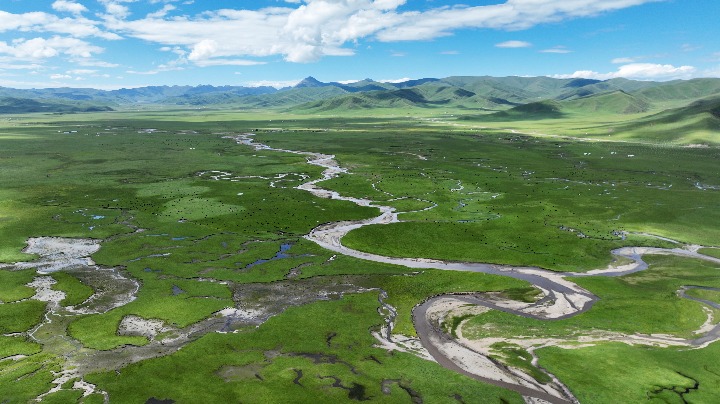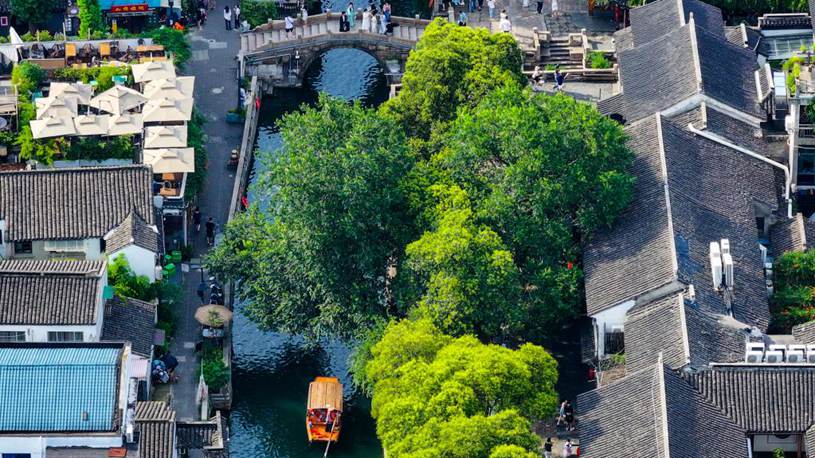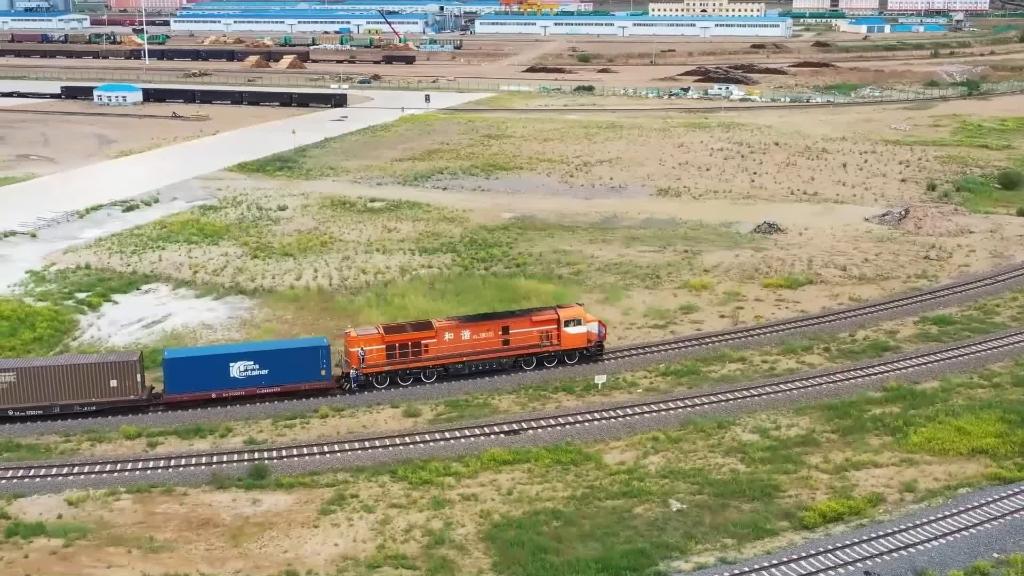
A child offers floral tribute to those who laid down their lives in fighting the Japanese aggression at the Museum of the War of Chinese People's Resistance Against Japanese Aggression in Beijing, capital of China, July 7, 2023. (Xinhua/Zhang Chenlin)
BEIJING, July 7 (Xinhua) -- China on Friday commemorated the 86th anniversary of the beginning of China's whole-nation resistance war against Japanese aggression.
On July 7, 1937, Japanese soldiers attacked Chinese forces at the Lugou Bridge in Beijing. The incident is recognized as the start of Japan's full-scale invasion of China and China's whole-nation resistance against the Japanese invaders.
A commemorative ceremony was held on Friday morning at the Museum of the War of Chinese People's Resistance Against Japanese Aggression, which is located near the Lugou Bridge.
About 500 people, including veterans' representatives and family members of military leaders and martyrs in the war, attended the ceremony. During the event, students recited patriotic poems and sang revolutionary songs, expressing the unwavering commitment of today's Chinese youth to make unremitting efforts for the great rejuvenation of the Chinese nation.
Attendees also offered floral tributes and paid their respects to those who laid down their lives in fighting the Japanese aggression.
An exhibition showcasing the development of the Communist Party of China during the war was held in the museum. Zhang Ruiqi, a student from Capital Medical University, said that it is particularly memorable to visit the museum on this special day.
"The content of today's exhibition is well-organized and profound, which made me realize that the victory of the resistance war against Japanese aggression was really hard-won," said Zhang.
Memorial activities honoring the occasion were also held in other parts of China.
On Friday morning, people from various walks of life visited a cemetery in Handan City, Hebei Province, where over 200 revolutionary martyrs were buried, including renowned fallen heroes during the resistance war against Japanese aggression.
Visitors listened to the martyrs' heroic deeds in their revolutionary cause, visited a memorial hall and laid flowers on their graves.
As a national patriotism education base, the cemetery has seen more than 6,000 people come to pay their respects to the martyrs since mid-June, said Yang Junling, Party chief of the cemetery.
"During today's visit, I've gained a deeper understanding of the fact that our happy life today did not come easily," said Zhang Xuanpu, an elementary school student.
"I will work hard to cultivate my character and skills, and when I grow up I will serve my motherland like the revolutionary forefathers," he added.
In northeast China's Heilongjiang Province, a new batch of evidence revealing more details of the Japanese invasion of China has been collected from Japan, the Exhibition Hall of Evidence of Crime Committed by Unit 731 of the Japanese Imperial Army in Harbin announced on Friday.
The historical materials include 38 postcards printed with lyrics of a Japanese militaristic song, with their backgrounds showing photos or drawings of battlefield scenes, Chinese soldiers, civilians, local conditions and customs, among other content.
The song, created in 1932 and sung by the invading Japanese army in China, was a product of Japanese militarism and an important tool to propagate militarism, said Jin Shicheng, a researcher at the exhibition hall.
The exhibition hall and the government of Mulan County of Heilongjiang, which sent representatives to Japan to collect the materials, also saw 18 photos brought back from Japan showing scenes of Japanese troops' invasion of northeast China, including some taken in Mulan.
The team will conduct an in-depth study of the newly collected evidence, based on other historical documents, to further restore the history of Japan's war crimes in China, according to Jin. ■











